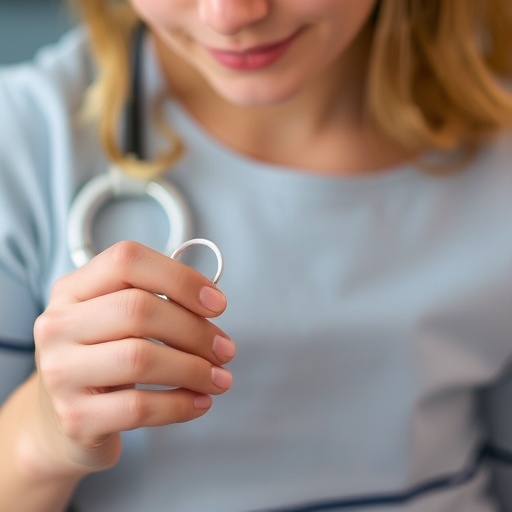New study supports the use of a data-driven approach to identify novel biomarkers
TORONTO, JANUARY 4, 2019 – A new multi-site brain imaging study in The American Journal of Psychiatry shows that sub-groups of people use their brains differently when imitating emotional faces – a task that reflects their ability to interact socially. Interestingly, individuals with schizophrenia do not have categorically different social brain function than those without mental illness, but fall into different sub-groups that may respond to different types of treatments. These findings call into question the most common research approaches in mental health.
“We know that, on average, people with schizophrenia have more social impairment than people in the general population,” says senior author Dr. Aristotle Voineskos in the Campbell Family Mental Health Research Institute at the Centre for Addiction and Mental Health (CAMH) in Toronto. “But we needed to take an agnostic approach and let the data tell us what the brain-behavioural profiles of our study participants looked like. It turned out that the relationship between brain function and social behaviour had nothing to do with conventional diagnostic categories in the DSM-5 (Diagnostic and Statistical Manual of Mental Disorders).”
Most brain research in the mental health field compares a disease group to a non-disease or “healthy” group to search for biomarkers, a biological measure of mental health symptoms. This search for biomarkers has been elusive. This multi-site research study – which included 179 participants recruited at CAMH in Toronto, Zucker Hillside Hospital in New York and the Maryland Psychiatric Research Center in Baltimore – calls that paradigm into question because people with the same mental illness may not show the same biological patterns.
The study, which involved participants completing a facial imitation task while undergoing functional MRI brain scans, found three “activation profiles,” says first author Dr. Colin Hawco, also of CAMH. These can be described as typical, over-activated and de-activated profiles.
“We think those with over-activated networks may be ‘inefficient’ in terms of brain activity – they probably struggled more and needed to work harder to do the same task compared to the other groups,” says Dr. Hawco. “The ‘de-activating’ group seemed to show very efficient use of their brain, and did better on behavioural tests of social processing as well.” These findings were true for participants with and without schizophrenia.
“There is really no effective treatment to deal with these social impairments, which is why we’re really invested in figuring out the brain networks of social behaviours as targets for treatment and research,” says Dr. Anil Malhotra, Director of Research at the Zucker Hillside Hospital. “We are now positioned to test treatments to help change brain function, rather than focusing on symptoms alone, when it comes to helping people with social impairment.”
People with social impairments may not be able to react as expected to emotions they see in others, such as fear, sadness or happiness. “As social impairments become more severe, people are more likely to be isolated, unable to function in daily life, and have a marked reduction in their quality of life,” says Dr. Robert Buchanan, Director of the Maryland Psychiatric Research Center, a psychiatrist and researcher who has been working to find new treatments to improve social function over the past three decades.
The findings were bolstered by an independent replication sample of 108 participants, which showed the same brain function findings as in the original sample.
###
The study, known as the Social Processes Initiative in Neurobiology of the Schizophrenia(s) (SPINS) was funded by the National Institute of Mental Health as part of its Research Domain Criteria (RDoC) initiative.
This study and other recent discoveries may provide a new platform to overcome the limited treatment innovation in psychiatry research over the past few decades, says Dr. Voineskos. “It’s great to see that a different approach may open a new window for treatment research. We can’t keep doing the same thing over and over again and expect a different result.”
The Centre for Addiction and Mental Health (CAMH) is Canada’s largest mental health and addiction teaching hospital and a world leading research centre in this field. CAMH combines clinical care, research, education, policy development and health promotion to help transform the lives of people affected by mental illness and addiction. CAMH is fully affiliated with the University of Toronto, and is a Pan American Health Organization/World Health Organization Collaborating Centre. For more information, please visit camh.ca or follow @CAMHnews and @CAMHResearch on Twitter.
Media Contact:
CAMH Media Relations
416-535-8501 ext. 36015
[email protected]
Now in its third century, the University of Maryland School of Medicine was chartered in 1807 as the first public medical school in the United States. It continues today as one of the fastest growing, top-tier biomedical research enterprises in the world — with 43 academic departments, centers, institutes, and programs; and a faculty of more than 3,000 physicians, scientists, and allied health professionals, including members of the National Academy of Medicine and the National Academy of Sciences, and a distinguished recipient of the Albert E. Laser Award in Medical Research. With an operating budget of more than $1.2 billion, the School of Medicine works closely in partnership with the University of Maryland Medical Center and Medical System to provide research-intensive, academic and clinically-based care for more than 1.2 million patients each year. The School has over 2,500 students, residents, and fellows, and more than $530 million in extramural funding, with most of its academic departments highly ranked among all medical schools in the nation in research funding. As one of the seven professional schools that make up the University of Maryland, Baltimore campus, the School of Medicine has a total workforce of nearly 7,000 individuals. The combined School and Medical System (“University of Maryland Medicine”) has an annual budget of nearly $6 billion and an economic impact more than $15 billion on the state and local community. The School of Medicine faculty, which ranks as the 8th highest among public medical schools in research productivity, is an innovator in translational medicine, with 600 active patents and 24 start-up companies. The School works locally, nationally, and globally, with research and treatment facilities in 36 countries around the world. Visit medschool.umaryland.edu/
CONTACT
Office of Public Affairs
655 West Baltimore Street
Bressler Research Building 14-002
Baltimore, Maryland 21201-1559
Contact Media Relations
(410) 706-5260
Media Contact
CAMH Media Relations
[email protected]
416-535-8501 x36015
http://dx.




